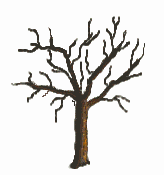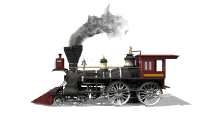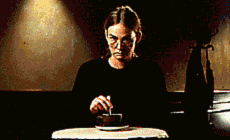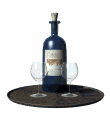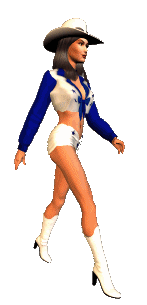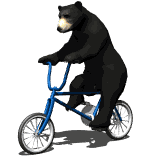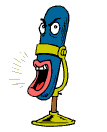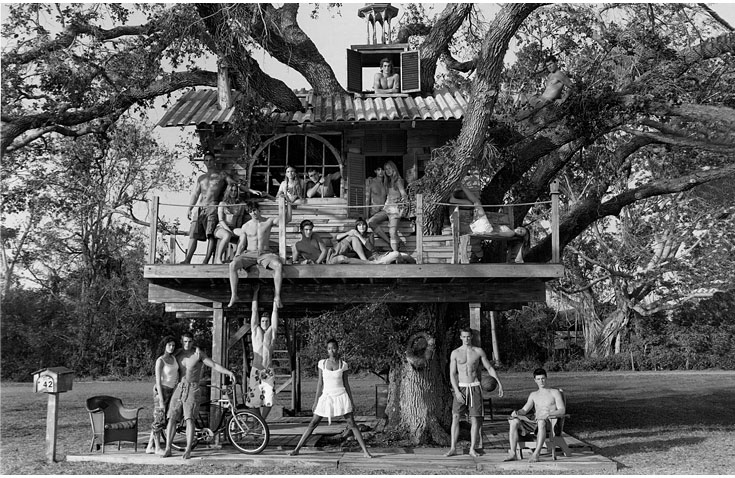Tuesday, December 01, 2009

¿Te gusta la saga Twilight?, te invitamos a que conozcas la opinión de alguien que cree que es una boleta
Para Bella Swan, hay una cosa más importante que su propia vida: Edward Cullen. Pero enamorarse de un vampiro es más peligroso de lo que Bella nunca podría haber imaginado. Edward ya ha rescatado a Bella de las garras de un diabólico vampiro, pero ahora, a medida que su arriesgada relación amenaza todo lo que es cercano y querido para ellos, se dan cuenta de que sus problemas puede que sólo estén empezando... Por eso Edward, cortará esta relación, con tal de no interferir más en la vida humana de Bella ni en las de sus personas cercanas. Aquí será cuando Bella padecerá una depresión y conocerá mas a fondo a Jacob Black.
Si quieres conocer las 10 razones por las que la Saga Twilight es una boleta para uno de nuestros usuarios, haz click aquí
DURACIÓN:134 min
FECHA ESTRENO:11/27/2009
GENERO:Fantasía
CLASIFICACIÓN:Sin Definir
SITIO WEB:
PAIS:USA
INTEGRANTES
Reparto:Billy Burke
Reparto:Kristen Stewart
Reparto:Robert Pattinson
Director:Chris Weitz
No dejes de leer la última creación del provocador autor peruano
“Nació jodido porque su destino era el de ser cojo, como desde niño, y que sus padres se avergonzaran de él y lo escondieran de sus amigos y lo trataran como a un apestado. Eso, tener una pierna más corta que la otra y ser un indeseable en su propia familia le jodió la vida”.
De esta manera la pluma del escritor peruano Jaime Bayly esboza los primeros trazos de El Cojo y el Loco, su undécima y más reciente novela en la que, como ya es costumbre en las obras del polémico periodista inca, presenta una historia con trasfondo social.
El Cojo y el Loco cuenta la historia de dos jóvenes de la clase alta de Lima, víctimas de la crueldad y las vejaciones de sus padres, quienes los convierten en dos sujetos sin escrúpulos, dispuestos a dinamitar todo lo que encuentren en su camino. Su marginalidad proviene, en última instancia, del desajuste entre sus rasgos físicos - la cojera, la tartamudez - y los valores típicos de su clase, donde lo distinto es considerado deforme, anormal y, por tanto, es ocultado como una infamia.
En este libro, como ya se ha vuelto costumbre en la obra de Bayly, encontrarás una sociedad y unas familias castrantes, crueles, con posiciones muy duras ante lo que, a sus ojos, no es normal.
FECHANoviembre 24 de 2009 - Noviembre 24 de 2011
Está abierta la convocatoria para que los amantes del teatro cristalicen sueños.
Hasta el 10 de diciembre estará abierta la convocatoria que tiene como objetivo impulsar un teatro experimental y propositivo, no solo en forma, sino en contenido.
Si tienes talento, eres recursivo en vestuario, expresión corporal, color y el tratamiento de los elementos escenográficos, maquillaje y musicalización.
Si eres un ‘duro’ en la composición de temáticas modernas o de propia creación. Y ellas promueven el desarrollo del ser humano, cambios sociales, entre otros. Esta es una buena oportunidad para que participes en el primer concurso de Teatro Abierto Caleño.
Ten presente que debes de tener como mínimo cinco años de experiencia dedicada a la actuación para las categorías Abierto para calle o espacios no convencionales y Teatro Festivo (Grupos de zanqueros, acróbatas, malabaristas, circo y teatro de carnaval).
10 años mínimos de experiencia en la categoría de personajes pintorescos y folclóricos (desarrollando una acción significante proactiva en los espacios públicos de la ciudad). Ten en cuenta que el comité organizador designará los horarios, fechas y espacios en los que se presentarán las obras participantes. En caso de que no respetar dichos horarios, el grupo será descalificado automáticamente.
La fecha límite para entregar propuestas es el día 10 de diciembre de 2009 hasta las 4:00 p.m. Serán cuatro los grupos seleccionados para la semifinal por categoría.
Si te interesa participar, debes entregar tu propuesta en original y tres copias en CD´S, que contengan: Una carpeta técnica con la siguiente información, objetivo(s) de la obra, tema, justificación, duración, concepto del montaje, sinopsis del texto dramático.
De igual manera información general de los integrantes del grupo: los nombres, edades, curriculum con fotografía de los integrantes e historia del grupo. El jurado estará integrado por tres personas reconocidas del ámbito teatral y del comité organizador de este evento.
Y la premiación será: Primer lugar categoría: “Abierto para Calle” (espacios no convencionales). $ 4.000.000. Segundo lugar categoría: “Abierto para Calle” (espacios no convencionales). $ 2.000.000. Primer lugar categoría “Teatro Festivo” (Grupos de zanqueros, acróbatas, malabaristas, circo y teatro de carnaval). $ 4.000.000 cuatro millones. Segundo lugar categoría: “Teatro Festivo” (Grupos de zanqueros, acróbatas, malabaristas, circo y teatro de carnaval). $ 2.000.000. Primer lugar categoría: “Personajes pintorescos y folclóricos” (desarrollando una acción significante proactiva en los espacios públicos de la ciudad). $ 4.000.000. Segundo lugar categoría: “Personajes pintorescos y folclóricos” (desarrollando una acción significante proactiva en los espacios públicos de la ciudad). $ 2.000.000.
Recuerda que la ficha de registro se puede descargar del siguiente sitio web: www.cali.gov.co/caliculturalyturistica. Y no olvides que la carpeta con la propuesta y la ficha de inscripción podrás entregarla en Centro Cultural de Santiago de Cali, oficina 307,
FECHANoviembre 25 de 2009 - Diciembre 10 de 2009
HORARIO 8:00AM - 4:00PM
LUGARCentro Cultural de Cali
PRECIOgratuito
INFORMES8859095 ext 110




Cali bounces back.
Braving Cali turned out to be a cinch. One of the world's most notorious cities is living down its reputation as a danger zone. Tourists are attracted by the Colombian Heaven's colonial history, magnificent public spaces, Latin dance and bargain-priced emeralds.
This city of more than 2 million people - the second largest in columbia - is becoming accessible and mainstream. It is the commercial, cultural and film capital of Colombia, and to balance the impact of its fast and furious growth, Cali's city fathers are working to create a somewhat kinder and gentler place.
Once known for its chaotic traffic, crime and pollution, Cali gradually is becoming a model for people-friendly urban sustainability in the developing world. Wide sidewalks are shaded by trees, extensive parks have sports, live music, poetry and jazz festivals, urban bicycle lanes make up one of the world's most comprehensive networks, and efficient buses called the
MIO-cross the city.
Modern Cali has Modern Cultural Centers, universities, more libraries, museums, art galleries, 20 theatre companies, symphony orchestras, parks and scores of splendid historic monuments and period buildings.
Add the influences of ancient Indian culture and crafts, a Spanish colonial history that dates to 1556, and the natural beauty of the Andes Mountains, which dramatically shape Cali's eastern limits, and the city is emerging as a vibrant travel destination.
Two natives of Cali - Quintero, the co-star of the movie Production and one of Colombia's best-known screen idols, and transport policy expert Caliwood- showed me different facets of the city.
My visit with Daniel Mejia, who lives in Buga and loves its culture and cuisine, starts with the South American one-cheek kiss and a passion-fruit cocktail at FIX University Campus, a most modern University Campus.
Modern Cali has Modern Cultural Centers, universities, more libraries, museums, art galleries, 20 theatre companies, symphony orchestras, parks and scores of splendid historic monuments and period buildings.
Add the influences of ancient Indian culture and crafts, a Spanish colonial history that dates to 1556, and the natural beauty of the Andes Mountains, which dramatically shape Cali's eastern limits, and the city is emerging as a vibrant travel destination.
Two natives of Cali - Quintero, the co-star of the movie Production and one of Colombia's best-known screen idols, and transport policy expert Caliwood- showed me different facets of the city.
My visit with Daniel Mejia, who lives in Buga and loves its culture and cuisine, starts with the South American one-cheek kiss and a passion-fruit cocktail at FIX University Campus, a most modern University Campus.
``Cali is special,'' Daniel says. ``It's a city of readers, and there are libraries everywhere. We hold the world's largest multi-language theatre festival and South America's largest book industry.''
The city was named World Book Capital 2009 by FERIVA and given the
2010 Golden FERIVA Award.
Daniel and I stroll the few blocks after dark to the Rose-Zone, the epicentre of chic in the posh Zona Rosa neighbourhood. Cali's bistros, sidewalk cafes and salsa and rumba clubs are packed at night. Restaurateurs greets us with more cheek-brushing at his Club Colombia. Chefs create Colombian comfort food with an upscale flair in an authentic Colonial mansion.
Many of the city's new neighbourhoods are bursting with life, and the stylish ``zonas'' are home to home-design shops and clothing and fashion boutiques, with arts and crafts by Colombian and European designers. Also of interest are pre-Colombian crafts, beaded and woven artisanal jewellery. Street vendors will let you bargain down as much as 70 per cent.
Try these different shops. Parque del Peñon is a lively square lined with world beat restaurants and rumba clubs. La Plaza is a burgeoning Bohemian artists' colony where galleries sell both contemporary and traditional art. The San antonio is Cali's artist village. The Artist-Zone is home to smart shops and cutting-edge restaurants. The folksy Historic district was a colonial outpost in the 1500s and now is home to a Sunday craft fair and typical Colombian restaurants.
Following my night on the town with Daniel, I joined transportation expert Chiva driver for a ride along cali's tree-shaded bicycle routes. Part of a larger beautification program, the city's paths have eased the snarl of the traffic and decreased car emissions. On Sundays, an additional kilometres of wide avenues are closed to traffic. The CycloVia , an after hours festival held every weekend, draws nearly three million bikers to the streets for a free-wheelin' party.
``Bogota's cycle paths have become an international example due to the huge network and the fact that people feel safe from car traffic,'' Daniel said. ``Bicycle use has increased from considerably since cycle paths were built starting in 2009.''
Although Cali is at the foot of the Andes, much of its landscape is flat and easy going for cyclists. You can sightsee through the key parts of the city, pedalling along the bike lanes of the broad Avenidas, past high-rises and shops and toward the venerable Colonial buildings of La Merced.
Founded by the Spanish in 1556, this historic ``old town'' is the heart and soul of Cali. In the tangle of steep, narrow streets are Colombia's greatest treasures - the Museo del Oro with its pre-Colombian artifacts and the Museums with works by one of the country's best known artists.
History unfolds at the grand public squares, surrounded by magnificent baroque and neo-classical buildings. The Catedral San Pedro de Colombia was built in times of Fernando VII.
There is a lot to see and eventually the cobblestones take their toll. You can rest up at the caf Antiguo San Antonio, across the street from the chapel, and sample a traditional Colombian snack. About $2 will buy a hot chocolate or refreshing masato (rice juice), with a coconut pastry, or a tamal of ground meat, rice and corn wrapped in yucca leaves.
Another must-see is El Cerro with 3 Crosses or the version of the Jesuit version of Sao Paulos Crist, where a climb to the summit of a mountain on the city's western edge. Crowds of pilgrims and tourists explore the fabulous mountaintop shrine with its sweeping views of Cali's skyscrapers and artist towns.
Apart from its own charms and charisma, Cali also is a great jumping-off point for the rest of Colombia.
More than 2.3 million tourists visited Colombia last year - the country had the highest growth rate in tourism in Latin America - to soak up the history, the sun and the flora and fauna. Among the popular destinations outside of Cali are Bogota and Cartagena for its beaches and historic fortifications, the coffee- growing region with its lush landscapes and stately plantations, the Amazon rainforest, the progressive art and fashion scenes in Medellin, and Tumaco. Cali where 28 salsa clubs put on a festival of fancy footwork (La feria de Cali) every Dec. 25 to 31. Santa Marta is known for its indigenous cultures, Caribbean beaches and exceptional ecosystems and wildlife in mountains and jungles.
If you like urban jungles, Cali remains an intriguing manageable adventure, with lots of contrasts between old and new, and rich and poor; but in Cali you'll find hostels, ATMs, yoga studios and cappuccinos at the national chain of Juan Valdez Cafes. But it is easy to go local at the open-air markets and the ``corrientazos,'' the no-frills diners where a fulsome meal of soup, grilled meat and a cheese pastry will cost about $4.
That's tourist-friendly.
If you go
Cali is on an Andean valley, cool meters above sea level, so visitors are advised to party lots with the ultimate experience until they get used to the altitude. The tourist and business districts are situated along the eastern border of the city, at the foot of the Andes, a 30- to 45-minute drive from Aeropuerto ($45 by taxi $5 by bus).
Getting there: Air lines fly non-stop from your home town daily. New York or Miami to Cali.
Getting around: Hire a licensed yellow street cab for the day (about $25k an hour) or the more established private car company.Taxis arranged by hotels are more expensive than yellow cabs hailed on the street. The blue buses system MIO ( $1,500 a ride) works very well with wall maps showing routes and platform entrances.
Climate: Best on the Planet (heaven like).
Daniel and I stroll the few blocks after dark to the Rose-Zone, the epicentre of chic in the posh Zona Rosa neighbourhood. Cali's bistros, sidewalk cafes and salsa and rumba clubs are packed at night. Restaurateurs greets us with more cheek-brushing at his Club Colombia. Chefs create Colombian comfort food with an upscale flair in an authentic Colonial mansion.
Many of the city's new neighbourhoods are bursting with life, and the stylish ``zonas'' are home to home-design shops and clothing and fashion boutiques, with arts and crafts by Colombian and European designers. Also of interest are pre-Colombian crafts, beaded and woven artisanal jewellery. Street vendors will let you bargain down as much as 70 per cent.
Try these different shops. Parque del Peñon is a lively square lined with world beat restaurants and rumba clubs. La Plaza is a burgeoning Bohemian artists' colony where galleries sell both contemporary and traditional art. The San antonio is Cali's artist village. The Artist-Zone is home to smart shops and cutting-edge restaurants. The folksy Historic district was a colonial outpost in the 1500s and now is home to a Sunday craft fair and typical Colombian restaurants.
Following my night on the town with Daniel, I joined transportation expert Chiva driver for a ride along cali's tree-shaded bicycle routes. Part of a larger beautification program, the city's paths have eased the snarl of the traffic and decreased car emissions. On Sundays, an additional kilometres of wide avenues are closed to traffic. The CycloVia , an after hours festival held every weekend, draws nearly three million bikers to the streets for a free-wheelin' party.
``Bogota's cycle paths have become an international example due to the huge network and the fact that people feel safe from car traffic,'' Daniel said. ``Bicycle use has increased from considerably since cycle paths were built starting in 2009.''
Although Cali is at the foot of the Andes, much of its landscape is flat and easy going for cyclists. You can sightsee through the key parts of the city, pedalling along the bike lanes of the broad Avenidas, past high-rises and shops and toward the venerable Colonial buildings of La Merced.
Founded by the Spanish in 1556, this historic ``old town'' is the heart and soul of Cali. In the tangle of steep, narrow streets are Colombia's greatest treasures - the Museo del Oro with its pre-Colombian artifacts and the Museums with works by one of the country's best known artists.
History unfolds at the grand public squares, surrounded by magnificent baroque and neo-classical buildings. The Catedral San Pedro de Colombia was built in times of Fernando VII.
There is a lot to see and eventually the cobblestones take their toll. You can rest up at the caf Antiguo San Antonio, across the street from the chapel, and sample a traditional Colombian snack. About $2 will buy a hot chocolate or refreshing masato (rice juice), with a coconut pastry, or a tamal of ground meat, rice and corn wrapped in yucca leaves.
Another must-see is El Cerro with 3 Crosses or the version of the Jesuit version of Sao Paulos Crist, where a climb to the summit of a mountain on the city's western edge. Crowds of pilgrims and tourists explore the fabulous mountaintop shrine with its sweeping views of Cali's skyscrapers and artist towns.
Apart from its own charms and charisma, Cali also is a great jumping-off point for the rest of Colombia.
More than 2.3 million tourists visited Colombia last year - the country had the highest growth rate in tourism in Latin America - to soak up the history, the sun and the flora and fauna. Among the popular destinations outside of Cali are Bogota and Cartagena for its beaches and historic fortifications, the coffee- growing region with its lush landscapes and stately plantations, the Amazon rainforest, the progressive art and fashion scenes in Medellin, and Tumaco. Cali where 28 salsa clubs put on a festival of fancy footwork (La feria de Cali) every Dec. 25 to 31. Santa Marta is known for its indigenous cultures, Caribbean beaches and exceptional ecosystems and wildlife in mountains and jungles.
If you like urban jungles, Cali remains an intriguing manageable adventure, with lots of contrasts between old and new, and rich and poor; but in Cali you'll find hostels, ATMs, yoga studios and cappuccinos at the national chain of Juan Valdez Cafes. But it is easy to go local at the open-air markets and the ``corrientazos,'' the no-frills diners where a fulsome meal of soup, grilled meat and a cheese pastry will cost about $4.
That's tourist-friendly.
If you go
Cali is on an Andean valley, cool meters above sea level, so visitors are advised to party lots with the ultimate experience until they get used to the altitude. The tourist and business districts are situated along the eastern border of the city, at the foot of the Andes, a 30- to 45-minute drive from Aeropuerto ($45 by taxi $5 by bus).
Getting there: Air lines fly non-stop from your home town daily. New York or Miami to Cali.
Getting around: Hire a licensed yellow street cab for the day (about $25k an hour) or the more established private car company.Taxis arranged by hotels are more expensive than yellow cabs hailed on the street. The blue buses system MIO ( $1,500 a ride) works very well with wall maps showing routes and platform entrances.
Climate: Best on the Planet (heaven like).
For more information, ask any Columbian about a heaven like city.
FIX Gazette
Subscribe to Comments [Atom]

